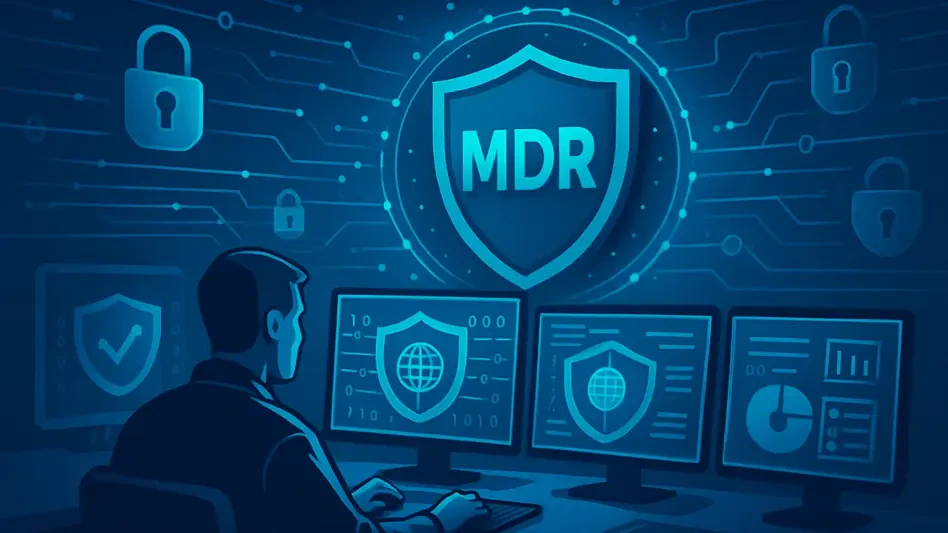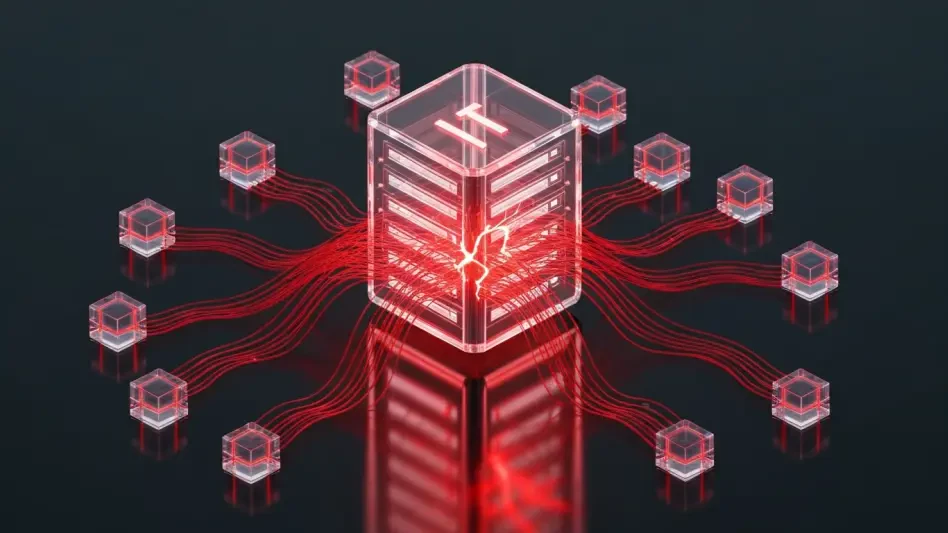Imagine a cyber attacker breaching a network, lurking undetected for days or even weeks, stealing sensitive data or deploying ransomware before anyone notices. This scenario is all too common for organizations relying solely on traditional Incident Response (IR) strategies, where delays in detection often lead to catastrophic damage. In contrast, Managed Detection and Response (MDR) has emerged as a game-changer in cybersecurity, promising faster threat identification and mitigation. The disparity in outcomes between these two approaches raises critical questions about effective cyber defense in an era of evolving threats.
This FAQ article aims to explore the key differences between MDR and IR, shedding light on why one consistently outperforms the other in safeguarding digital assets. By addressing fundamental concepts and providing actionable insights, the content will guide readers through the nuances of each approach. Expect to gain a clear understanding of how MDR reduces attacker dwell time, tackles prevalent threats, and addresses systemic vulnerabilities compared to IR.
The scope of this discussion includes real-world data, specific examples of threat trends, and practical takeaways for enhancing cybersecurity readiness. Readers will discover not only the strengths of MDR but also the persistent challenges that both strategies face in the face of predictable yet damaging attack methods. This exploration sets the stage for informed decision-making in bolstering organizational defenses.
Key Questions or Key Topics
What Are MDR and IR, and Why Do They Matter in Cybersecurity?
Understanding the distinction between Managed Detection and Response (MDR) and Incident Response (IR) is essential as cyber threats grow in frequency and impact. MDR is a proactive, managed service that combines advanced technology with human expertise to continuously monitor, detect, and respond to threats in real time. IR, on the other hand, is typically a reactive process focused on investigating and mitigating breaches after they have been identified, often through in-house teams or external consultants.
The importance of this comparison lies in the escalating stakes of cyber defense, where delays can mean the difference between a minor incident and a full-scale disaster. Organizations face relentless attacks exploiting known vulnerabilities, and the ability to respond swiftly determines the extent of damage. Both approaches aim to protect, but their methodologies and outcomes differ significantly, impacting overall security posture.
By examining these strategies, it becomes clear that MDR’s emphasis on prevention and speed offers a critical edge. Meanwhile, IR remains vital for post-incident recovery but often struggles with early detection. This foundational difference shapes how each method addresses modern cyber challenges, making it a pivotal consideration for any security-focused entity.
How Do MDR and IR Differ in Threat Detection and Response Times?
A major gap between MDR and IR surfaces in their approach to detecting and responding to cyber threats. MDR leverages 24/7 monitoring and automated tools paired with expert analysis to identify suspicious activity almost immediately, often before significant harm occurs. IR, by contrast, typically engages after an incident is reported, which can result in prolonged periods of undetected malicious activity within a network.
Data reveals a stark contrast in effectiveness, particularly in attacker dwell time—the duration an intruder remains undetected. In MDR-supported environments, the median dwell time is just one day, allowing for rapid intervention. For IR-led cases, this stretches to seven days, giving attackers ample opportunity to execute their objectives, such as deploying ransomware or exfiltrating data.
This discrepancy highlights MDR’s strength in minimizing damage through early action. For instance, in ransomware scenarios, MDR reduces dwell time to three days compared to seven in IR cases, often preventing full attack deployment by disrupting lateral movement. Such speed is a cornerstone of effective defense in today’s fast-paced threat landscape.
Why Is Ransomware Less Prevalent in MDR Cases Compared to IR?
Shifting threat patterns underscore another key advantage of MDR over IR, particularly with ransomware. Among organizations using MDR, ransomware has fallen to the third most common threat at 29%, overtaken by network breaches. In IR scenarios, however, ransomware dominates as the leading issue, accounting for 65% of incidents, reflecting a significant gap in preventive capabilities.
The reason for this divergence lies in MDR’s proactive stance, which focuses on identifying precursor activities like unauthorized access or credential misuse before ransomware can be deployed. IR, being reactive, often deals with the aftermath when ransomware has already encrypted critical systems, leading to higher incident rates and greater disruption.
This trend illustrates how MDR’s early intervention can alter the threat hierarchy faced by organizations. By halting attacks at initial stages, MDR not only reduces ransomware frequency but also shifts the focus to other emerging risks like network breaches. This adaptability is crucial as attackers continuously refine their tactics to exploit vulnerabilities.
What Persistent Vulnerabilities Affect Both MDR and IR Outcomes?
Despite their differences, both MDR and IR reveal common systemic weaknesses that attackers exploit with alarming consistency. Compromised credentials remain a primary entry point, contributing to 41% of breaches across all cases. Additionally, inadequate or missing Multi-Factor Authentication (MFA) affects a staggering 62% of MDR cases and 66% of IR cases, leaving doors open for unauthorized access.
Infrastructure issues further exacerbate the problem, with nearly 40% of breached organizations relying on unsupported operating systems. Another 40% lack basic protections on critical systems, making them easy targets for well-known attack methods. Attackers often use familiar tools like Remote Desktop Protocol (RDP) and PowerShell for lateral movement, capitalizing on these predictable lapses.
Even with MDR’s advanced capabilities, these foundational flaws cannot be fully mitigated without organizational commitment to security hygiene. The data shows that attackers rarely innovate, instead reusing established techniques and tools, such as the Impacket toolset, which has seen a threefold increase in usage since last year. Addressing these enduring gaps is essential for any defense strategy to succeed.
How Do Attackers Exploit Systemic Flaws Regardless of Defense Strategy?
The tactics employed by cyber attackers often rely on exploiting well-documented systemic flaws rather than developing novel approaches, impacting both MDR and IR environments. A notable trend is the use of “living-off-the-land” binaries (LOLBins), with a 70% overlap in tool usage across cases, demonstrating attackers’ preference for leveraging legitimate system tools to blend in with normal activity.
Common methods include abusing Microsoft’s Notepad for credential theft and using PowerShell for command execution, tactics that remain effective due to insufficient monitoring or outdated systems. These approaches succeed because many organizations fail to implement basic controls, allowing attackers to operate undetected for extended periods, especially in IR-heavy setups.
This persistence of familiar attack vectors emphasizes that technological solutions alone are insufficient. Whether supported by MDR or relying on IR, organizations must address procedural shortcomings, such as poor MFA adoption and delayed system updates, to disrupt these cycles of exploitation. The data reinforces that speed and vigilance, hallmarks of MDR, offer a better chance to counter such predictable threats.
Summary or Recap
This discussion highlights that MDR significantly outpaces IR in critical areas of cyber threat defense, particularly in detection speed and response effectiveness. With a median attacker dwell time of just one day compared to seven in IR cases, MDR’s proactive monitoring often prevents full attack execution, as seen in reduced ransomware prevalence at 29% versus 65% in IR scenarios. These metrics underline the value of early intervention in curbing damage.
Persistent vulnerabilities, however, remain a shared challenge, with compromised credentials, inadequate MFA, and outdated infrastructure affecting outcomes across both strategies. Attackers exploit these known gaps using familiar tools and tactics, revealing that many breaches stem from preventable lapses rather than sophisticated methods. This reality places responsibility on organizations to prioritize fundamental security practices alongside advanced solutions.
For those seeking deeper insights, exploring resources on cybersecurity best practices, such as guides on robust MFA implementation and system hardening, can provide actionable steps to enhance readiness. Addressing both technical and procedural weaknesses remains paramount to building a resilient defense against evolving threats.
Conclusion or Final Thoughts
Reflecting on the insights shared, it becomes evident that while MDR offers a decisive advantage over IR in reducing the impact of cyber threats, neither approach fully compensates for basic security oversights. The stark differences in dwell times and threat prevalence paint a clear picture of MDR’s proactive strength, yet the recurring vulnerabilities expose a deeper need for systemic change. This analysis underscores that success in cyber defense hinges on a blend of rapid response and foundational diligence.
Looking ahead, organizations are encouraged to take concrete steps, such as auditing current security postures for MFA gaps and unsupported systems, to fortify their defenses. Investing in training to recognize early signs of compromise also emerges as a vital measure to complement MDR or IR frameworks. These actions promise to bridge the gap between reactive recovery and proactive prevention.
Ultimately, the journey toward robust cybersecurity demands a tailored approach, where the lessons from MDR’s effectiveness can inspire broader improvements. Each entity is urged to evaluate how these insights apply to their unique environments, ensuring that both technology and human vigilance work in tandem to counter persistent and evolving threats.








